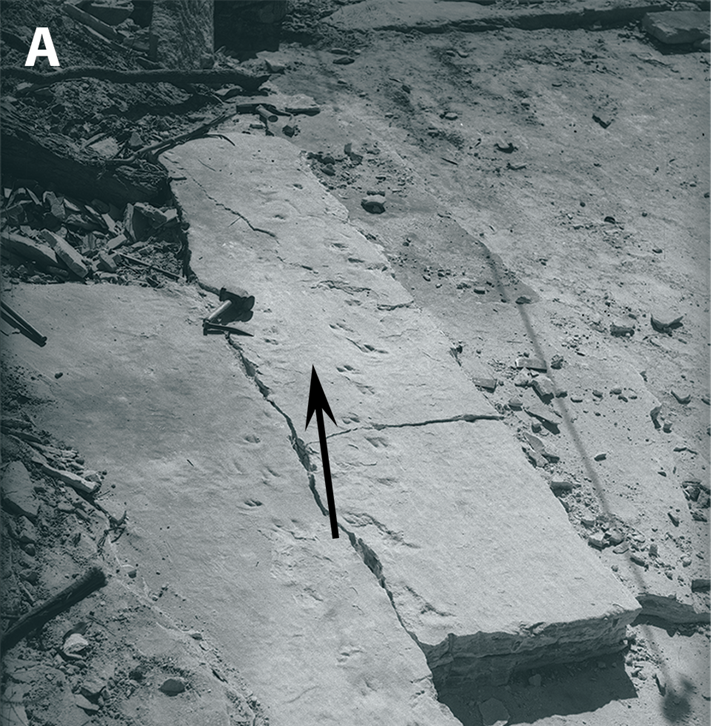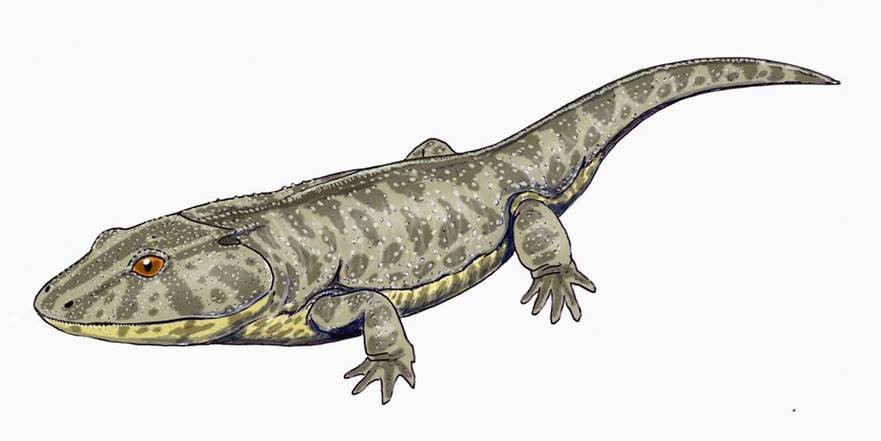The footprints were identified by Roy Minden Farman, a former Masters student at the University of New England in Armidale, who noticed them in a storage facility of artefacts belonging to the Australian Museum.
The footprints come from rocks that formed at the bottom of large rivers that once covered the Sydney region in the Middle Triassic period (around 240 million years ago) before the appearance of dinosaurs. The sand at the bottom of these rivers eventually turned to stone and are now famously used as building materials across Sydney region, where it is referred to as ‘Sydney sandstone’. The owner of the sandstone quarry at Berowra, Geoffrey Scarrott, first noticed the footprints as they were being unearthed in the 1940s. They were eventually transferred to the Australian Museum in Sydney where they were displayed for a short period in the 1950s but were later moved into the research collections.

Image: Historic photo of the footprints being excavated from the Berowra quarry in the 1940s. Individual footprints can be seen on either side of the arrow. Arrow indicates the direction the animal was travelling (source: Australian Museum archives).
The trackway measures 4.2m long and consists of at least 35 foot and handprints. Only two fingers from each hand and foot made their impressions in the sandy bottom, making the precise identity of the animal difficult to establish.
Researchers at the University of New England determined that it was likely a temnospondyl (an extinct group of salamander-like amphibians) between 0.8 and 1.35 m long, the bones of which are reasonably well known from rocks in the Sydney region. Despite this, animal fossils are extremely rare in the ‘Sydney sandstone’.
The tracks are also significant because they are the oldest record of a swimming tetrapod—that is, all animals with four legs, including humans—from Australia.
“The foot and hand prints, along with the gaps between the sequence of traces, were unlike anything I had seen before. This led me to believe the animal was swimming in water” said Farman, who led the study.
Farman later confirmed that the animal was merely brushing the river bottom with its hands and feet rather than making full contact with the ground as would be expected if the animal was walking. All tetrapods evolved from fishy ancestors and emerged onto land 360 million years ago, roughly 100 million years earlier than the Berowra footprints. The footprints of these early tetrapods are usually made on land, therefore the tracks made by a swimming animal are a valuable insight into how these animals moved 240 million years ago.
The original quarry where the fossils were found has since been developed over and is no longer accessible.
The study was published last week in the Journal of Paleontology.


